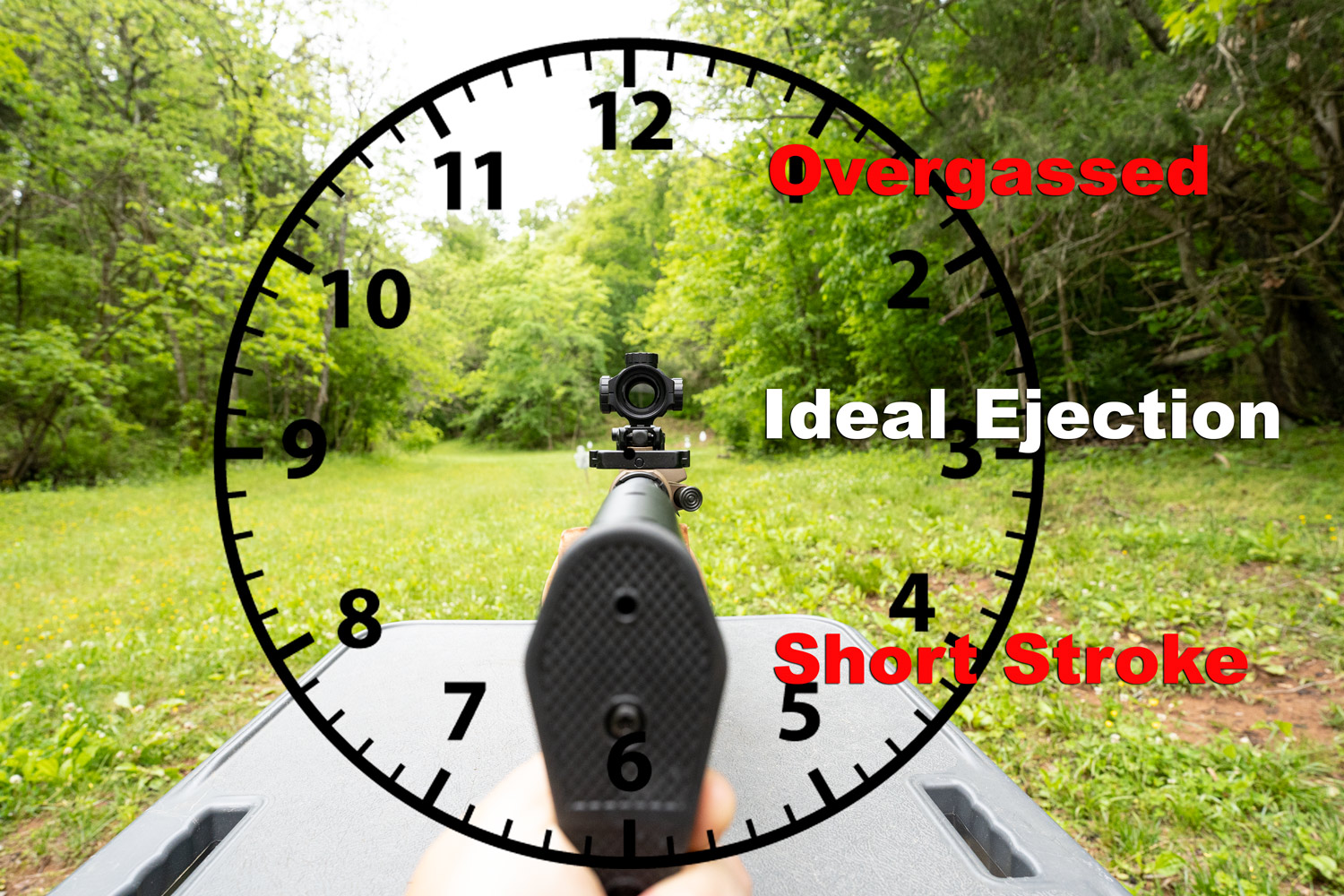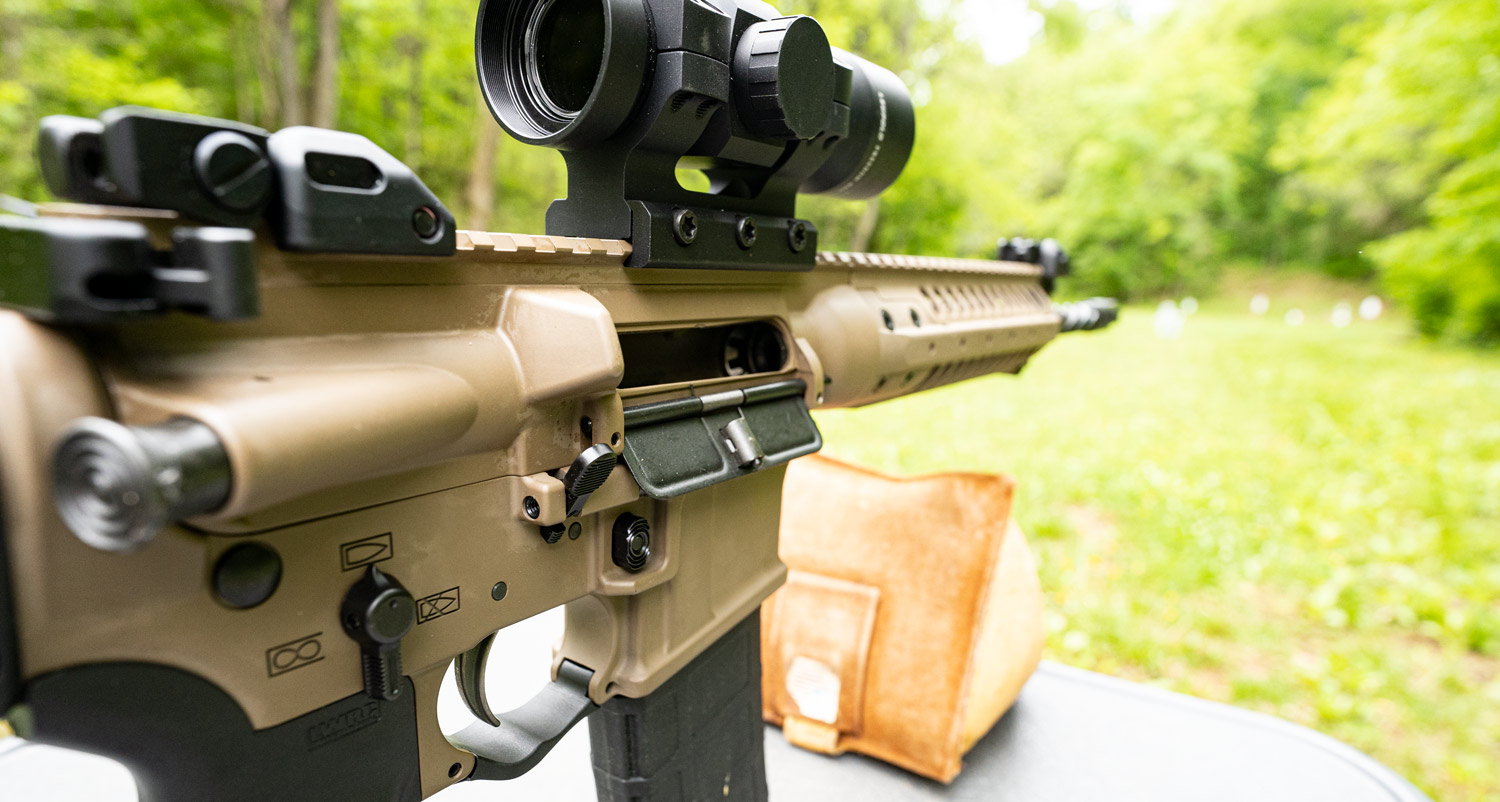In gun-speak, “ejection pattern” refers to the direction your semi-automatic firearm is spitting out spent cases. Many shooters do not care about this unless hot brass cases are actually hitting them. Those casings are hot enough to blister any skin that they touch – but your AR-15 ejection pattern actually says a lot about how well it’s functioning.
AR-15 Ejection Patterns

When discussing ejection patterns, it is helpful to picture the face of a clock. The rifle’s barrel points to 12:00, its ejection port is at the center of the clock face, and its stock points to 6:00.
Ideally, your AR-15 will eject spent cases from 3:00 to 4:30. If its ejection pattern falls between 12:00 and 3:00, that indicates it is over gassing; When that ejection pattern falls between 4:30 and 6:00, that indicates it is short stroking.
If your rifle’s ejection port is on the right-hand side, it should be incapable of ejecting cases between the 6:00 and 12:00 positions. When this happens, your cases may be bouncing off a range stall wall (or the poor guy standing next to you). (Of course, if your rifle is left-handed, just imagine a mirror version of the clock diagram.)
Ejection Positions
12:00 to 3:00: Over Gassing
When you fire ammo through your AR-15, its gas block collects some of the pressure created by ignition and sends it toward the upper receiver and bolt carrier group (BCG). This generates the force needed to extract the case and chamber the next cartridge.
When an AR-15 rifle ejects cases at a zero to 90 degree angle, this typically indicates that it is over gassing; i.e. the gas block is permitting excessive pressure to reach the upper receiver and BCG. This will accelerate wear on your rifle, but fortunately it’s an easy fix.
Most factory rifles come with gas blocks that have a single pressure setting. Replacing that stock gas block with an adjustable gas block takes very little time and effort. An adjustable gas block does require more frequent cleaning. Of course, many of us believe the complete control it gives you over your AR-15’s gas pressure is worth the $80 or so that the part costs.
Alternatively, you may elect to install a heavier buffer. This will slow down rate at which the AR-15 cycles to help prevent excessive wear and correct its ejection pattern, and it has the additional effect of reducing recoil. Other shooters may elect to install a heavier BCG or fine-tune their buffer spring to offer less resistance.
3:00 to 4:30: Ideal

The great Sam Kinison once said, “I called a detox center just to see how much it would cost. $13,000 for three weeks! My friends, if you can come up with thirteen grand, you don’t have a problem yet.” In that vein, if your AR-15 is ejecting cases at a 90 to 135 degree angle, then you don’t have a problem either.
4:30 to 6:00: Short Stroking
When your AR-15 is ejecting cases at a 135 to 180 degree angle, this indicates that it is likely short stroking. This problem is essentially the opposite of over gassing, where insufficient gas pressure is reaching the upper receiver and BCG. The cases are only barely ejecting in this situation; too little pressure will fail to cycle the AR-15 at all.
Short stroking has the same common fix as over gassing: an adjustable gas block. Naturally you’re going to want to adjust that gas block to let more gas pressure reach your upper receiver and BCG instead of less!
Alternatively, you may choose to install a lighter buffer or BCG. Fine-tuning the buffer spring to offer greater resistance is another viable solution. Finally, check your AR-15 to make sure it’s not actually leaking gas during ignition. This may cause insufficient gas pressure as well.
Conclusion
Pay attention to your AR-15 ejection patterns! Shooters who don’t reload their spent brass typically don’t give a fig about where their cases land, but this information may help you prevent needless wear and tear on your rifle, or correct low gas pressure that could result in failure to feed or fire.






Very informative article. Good job and thanks.
Thanks, I just built my second one and noticed I was picking up shells at a totally different area